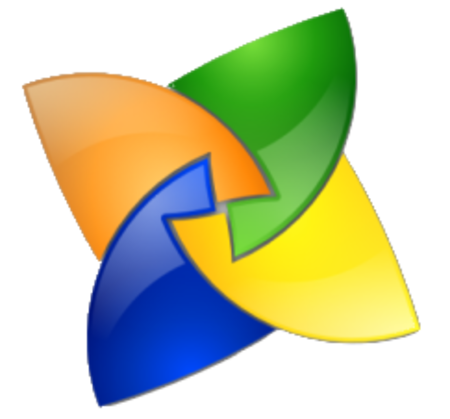| Previous
Page |
PCLinuxOS
Magazine |
PCLinuxOS |
Article List |
Disclaimer |
Next Page |
Happy 14th, PCLinuxOS! |
|
by Meemaw Amazingly enough, it's already another birthday! PCLinuxOS was created in October 2003, so everyone's favorite distro is 14 years old this month!  From the PCLinuxOS homepage. If you're new to PCLinuxOS, you might be wondering about the origins of PCLinuxOS. If you're a PCLinuxOS veteran, few tire of hearing this story again. It began on October 24, 2003. PCLinuxOS Preview .4 was released as a fork of Linux Mandrake (Mandriva) 9.2. Since that time, PCLinuxOS has matured into its own independent Linux distribution. Just uttering the all-still-too-common line that PCLinuxOS is still a fork of Mandriva may cause sparks to fly. While PCLinuxOS may have been originally forked from Mandriva, it also borrows from openSUSE, Fedora, Ubuntu, Knoppix, Mepis, Debian, Slackware, Arch and just about any/every other Linux distro around. Our favorite packager, Texstar, says it best. In Texstar's words: In the summer of 2003, I became interested in Live CD technology after looking at Knoppix and a fresh distribution from a fellow named Warren, called Mepis. I was interested in helping Warren with Mepis at the time, but I had no clue how to build DEB files. Coming from 5 years of packaging RPMS and not really wanting to learn a new packaging system, I happened to come across a South African fellow by the name of Jaco Greef. He was developing a script called mklivecd and porting it to Mandrake Linux. I, along with Buchanan Milne (Mandrake contributor) and a few others, began working with Jaco to help debug the scripts. I got an idea to make a livecd based on Mandrake Linux 9.2, along with all my customizations, just for fun. I had previously provided an unofficial 3rd party repository for the users of Mandrake for many years, but had since parted ways. Since Mandrake was a trademarked name, myself and others decided to name the Live CD after our news site and forum, pclinuxonline, thus PCLinuxOS. Preview .3 was my first attempt to make a livecd. I distributed it initially to about 20 people to get their reaction and feedback. Everyone who tested it loved the livecd but there was one thing missing. There wasn't a way to install the thing to the hard drive! srlinuxx from tuxmachines.org came up with a novel way to copy the livecd to the hard drive and posted it on our forums. Jaco utilized this information and inspiration from the Mepis installer and wrote a pyqt script to make the Live CD installable, thus the birth of a new distribution. On October 24, 2003, PCLinuxOS Preview .4 was released as a fork of Linux Mandrake (Mandriva) 9.2 utilizing mklivecd scripts from Jaco Greef, a multimedia kernel from Thomas Buckland (2.4.22-tmb) and a customized KDE (3.1.4-tex). Preview .5 through .93 were built upon on previous PCLinuxOS releases. After three years of updating one release from the other using the same gcc and glibc core library, we found too many programs would no longer compile or work properly against this aging code base. In November 2006, we utilized a one time source code snapshot from our friends at Mandriva to pull in an updated glibc/gcc core and associated libraries. We spent the following 6 months rebuilding, debugging, customizing, patching and updating our new code base. We pulled in stuff from our old code base, utilized patches/code from Fedora, Gentoo and Debian just to name a few. This is why you will never see me distro bashing, as it would be hypocritical to do such a thing. We are still dependent in many areas on other distros development processes due to our limited but hard working volunteer development team.  Texstar On May 20th, 2007, we felt we had reached a pretty stable base and released PCLinuxOS 2007. It utilized our own kernel from Oclient1, KDE built by MDE developer Ze, updated mklivecd scripts from IKerekes & Ejtr, a heavily patched Control Center, graphics from the PCLinuxOS beautification team, and many application updates from Thac and Neverstopdreaming. Development continues as work is being done for a Minime release and an international DVD. A future release of PCLinuxOS will feature an updated kernel, KDE 4, fresh Xorg server and all the latest applications. All in all it has been a great ride and we have made many friends along the way. Some have gone on to other distributions and many are still here from our first release. As I've always said, we're just enjoying Linux technology and sharing it with friends who might like it too. We hope you have enjoyed the ride as well. Since then, of course, we've seen many changes. People have come and gone, and the distro continues to evolve and improve. The forum, as well, continues to be a place where anyone can get the help they need in a family setting.  Logo from 2009 Over the years, the offerings for desktop environments has evolved. PCLinuxOS started off with KDE 3.x. Over the years, PCLinuxOS has featured the following desktop environments: KDE 4, KDE 5, LXDE, Xfce, Mate, Enlightenment, Trinity, Cinnamon, Gnome 2.x, WindowMaker, IceWM, Fluxbox, and Openbox. Some of these have fallen by the wayside, either no longer being offered, or having moved on in development. Many of these are still available for installation from a PCLinuxOS LiveCD. Most of the others are available for installation from the PCLinuxOS repository, installing parallel alongside of another desktop. There are also other less common desktop environments available for installation besides the ones we've listed here. Whatever your likes, and whatever your tastes, you are sure to find a perfect fit for your needs. The default desktop environments are KDE 5 Plasma and Mate, but we have some wonderful community members who have remastered LXDE, Xfce and Darkstar (a stripped down version of KDE 5), with some available in more than one language.  PCLinuxOS Pinwheel from 2006 Everyone loves to see positive comments, and the people at PCLinuxOS are no different. We recently got to read a wonderful review from the site http://www.linuxandubuntu.com (shortened by Meemaw) The first thing that we all search for a distro to have is a rock solid stable system. PCLinuxOS is a very stable system. I tried copying files, playing songs, watching movies on the system and all worked great. Running 6 apps together didn't crash my system nor installing new packages. The overall system is really stable as I experienced last 2 days. The system uses rpm packages which are not hard to find and install. The system also supports APT commands which are great to manage apps via terminal. There are also 3 themes pre-installed which you can customize. There are a nice set of pre-installed apps. I think this is the 1st distro I encountered till now which has really good selection of apps pre-installed. Do you want to play media files? VLC is there. The online streaming of music, Spotify got your back. Kdenlive is there to edit videos and LibreOffice to handle documents. Bleachbit to clean junk while Virtualbox to try a new distro. Chrome to surf internet and Thunderbird to read emails. There is the control center to get your hands on system control. I think this is cool because control center seems to ease your control related work. There are vast options which you can freely roam after installation. I would like to mention that settings are separate from Control center. Many people will think control center is settings but it is not. Both are different. This is a great way to keep complex tools out of settings and ease out many tasks. The best feature according to me in the whole distro. As almost every Linux distro, you can also live boot in this distro and customize options you would like and try to use before installation. PCLinuxOS is one of those distros which people really don't know much. I felt that it is not getting that name which it deserves. A rock solid system, nice selection of apps, a lot of customizations and small in size and fast. This is what any user will want from an OS. Try it, I think it won't disappoint you. You got my words. DistroWatch has reviews under the distro information, and I saw some there that really made me happy as well: Absolutely the best Plasma desktop I've seen yet! AND: This is a superb Linux OS. It is easy to install with a very intuitive install guide. Once loaded onto your hard drive it's a breeze setting up networking through its settings and configuration manager. Of cos, all the usual software is installed LibreOffice, Google Chrome web browser, and Thunderbird email. The system is fast and stable and has not locked up on me yet which nearly all other distros have done. It is very pleasant to use and has an excellent software center to download any apps that are not installed. This is a pleasure to use and should be number 1 in the distro ranks not mint. It has Kdenlive as a video editor and Zulucrypt for encrypting a hard drive or folders. Fast and good looking a great free OS that actually works and not buggy, brilliant job guys. Then, on the Everyday Linux User site, the reviewer summarized with this: PCLinuxOS was the first Linux distribution that really made Linux useable for the masses... It has to be said though that this is a really nice distribution for the Everyday Linux User and I can happily recommend using it as I did the last time I reviewed PCLinuxOS.  Dobie logo Many of us "old-timers" have used PCLinuxOS since it's early days and have witnessed all the ups and downs of the distro. Through it all, this wonderful distro has thrived, and continues to be "So cool, even ice cubes are jealous." |



